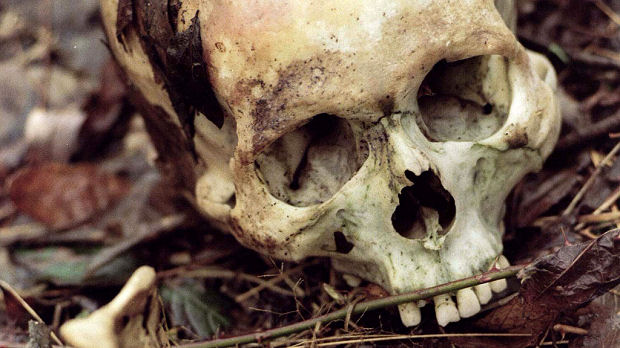Ratko Mladic and the Srebrenica massacre
Arrested in Serbia, Ratko Mladic was indicted for genocide after the 1995 slaughter of around 8,000 Muslim men at Srebrenica, in Bosnia.

The names of Serbian general Ratko Mladic and his former political boss Radovan Karadzic are indissolubly linked with two seminal events from the 1992-95 Bosnia war.
In May 1992, along with his fellow Serbian generals, the then Lieutenant Colonel General Mladic instigated the 44-month siege of Sarajevo, the Bosnian capital.
Three years later, in July 1995, forces under Mladic moved to lay siege to Srebrenica, an enclave inside Bosnia where tens of thousands of predominantly Muslim civilians had sought refuge from advancing Bosnian Serb troops.
Ratko Mladic’s name is indissolubly linked with two seminal events from the Bosnian war: Srebrenica and the siege of Sarajevo.
On 6 July the Serbs mounted an offensive on the enclave, which was defended by several hundred lightly armed Dutch troops. Some of the Dutch soldiers retreated into the enclave, while others surrendered to the Serbs. By 9 July one Dutch soldier had been killed and some 30 others taken hostage.
The promise of aerial support from NATO planes did not materialise, and on the afternoon of 11 July General Ratko Mladic entered Srebrenica. His arrival was filmed by Serb camera crews.
Alex Thomson: up close and personal with General Mladic - my 1995 encounter
The following day Serb forces started to separate out males aged 12 and older from the women, elderly men and children, most of whom were deported over the next day. More than 20,000 women and children from Srebrenica are thought to have been forcibly transferred.
On 13 July, according to reports, Dutch troops witnessed incidents suggesting that Serb soldiers were engaged in the systematic murder of their male Bosnian Serb detainees. In addition to execution by gunfire, evidence suggests men were subjected to torture and were buried alive.
Reports suggested Serb soldiers were engaged in the systematic murder of their male Bosnian detainees.
In the following days, stories began to emerge of massacres as survivors from Srebrenica arrived in Muslim-held territory.
In the same month, July 1995, General Mladic and Radovan Karadzic were indicted for genocide during the siege of Sarajevo.
Four months later, in November 1995, both men were charged with orchestrating the mass slaughter of up to 8,000 Muslim civilians after the fall of the Srebrenica enclave. The massacre in Srebrenica is thought to be the worst in Europe since world war two.
Has much changed since the massacre in Srebrenica, asks Alex Thomson? It would be good to think so. But consider only this fact - unlikely to get much coverage. Yesterday Amnesty International issued a report criticising the UN for failing to prevent the massacre of hundreds of civilians recently in the Ivory Coast.
These people were cut down in the recent brutal civil war, even though a UN base to protect them was very close to the locatino of the massacres. Tell that to the fatherless of Srebrenica.
Read more: Mladic arrest revives UN's Srebrenica trauma
-
Latest news
-
‘Government responsiveness should be improved’ says infected blood inquiry chair4m

-
Infected Blood scandal: How UK failed on a global scale4m

-
‘There’s a strong evidential basis’ for ICC to grant arrest warrants for Netanyahu, says criminal law expert4m

-
International Criminal Court prosecutor seeks arrest warrants for Israel PM and Hamas leaders3m

-
‘Highly unlikely there was foul play’ in Iran president helicopter crash, says Tehran professor5m

-




